Hickinbotham Revivalist Merlot 2017
| Country: | Australia |
| Region: | McLaren Vale |
| Winery: | Hickinbotham |
| Grape Type: | Merlot |
| Organic: | Yes |
| Vintage: | 2017 |
| Bottle Size: | 750 ml |
Hickinbotham Revivalist Merlot is made from 100 percent Merlot.
The Merlot for this red wine was sourced from vines planted in 1989 and 1976 at 220-245m altitude on a western facing aspect on the estate. During harvest, we hand-picked, de-stemmed, whole berry sorted, then 100% gently crushed. We then cold soaked, with native fermentation, and pumped over daily with a minimum of 21 days on skins. Basket pressed with light pressing included in free run, heavier pressings kept separate and not included, drained directly to barrel. The wine was racked and returned three times during maturation for 15 months, aged in fine-grain Bordeaux coopered barrels of which are approximately 25% new.
Review:
Deep ruby. Lush cherry-cola, blackberry and mocha qualities on the deeply perfumed nose, which is complemented by suggestions of candied rose and vanilla. In a round, generous style, offering sweet dark berry and fruitcake flavors that are supported by an undercurrent of juicy acidity. Pliant tannins frame an impressively long, sappy finish that strongly repeats the cherry and floral notes. 50% new French oak.
- Vinous 94 Points
Hickinbotham Peake Cabernet Shiraz is made from 60 percent Cabernet and 40 percent Shiraz.
Named after the late Mr. Edward John Peake who established the first vineyard and orchard at Clarendon circa 1850. Blending Cabernet Sauvignon and Shiraz is a famous part of Australian winemaking history and whilst the individual components of this wine are mighty, the sum of The Peake’s parts is magnificent. The Cabernet shines aromatically with notes of blackberry pie and dark chocolate, while the Shiraz fills the mid-palate with black plum and toasty oak. Fine tannins and balanced acidity contribute to an incredibly long finish. The Peake continues to honor the legacy of this iconic Australian blend.
Review:
Hickinbotham's 2017 The Peake Cabernet Shiraz is a 60-40 blend of the varieties, aged in a healthy proportion of new French oak. As a barrel selection, it stands above the other wines in the lineup, being more complex and complete than either the Brooks Road Shiraz or the Trueman Cabernet. Cassis leads the way, rounded out by ripe cherries and joined by shadings of cedar and vanilla. It's full-bodied and concentrated in the mouth, rich, supple and almost creamy in texture and boasts a long, silky finish. While nearly drinkable already, it should easily age for a decade or more.
-Wine Advocate 96 Points
Hickinbotham Brooks Road Shiraz is made from 100 percent Shiraz.
After the hand-picked Shiraz clusters were delivered from high country (210-230 meters) by Viticulturer Michael Lane, the winemaker destemmed and sorted the whole berries into open fermenters. The cold soak was four days, the skins plunged three times daily, and the minimum time on skins was eighteen days. The wine was then basket pressed; its free run and pressings kept separate. To minimize filtration at bottling, three rack-and-returns were conducted over fifteen months as the wine seasoned in a mixture of Burgundy-coopered barrels.
This Shiraz shows the characters this vineyard has displayed since the start, but perhaps in a more elegant, harmonious and balanced form. Its consistency is comforting and reassuring, buttressed by blue and black fruit notes throughout. It is readily enjoyable but has all the structure, acid and tannin to offer decades of rewards from cellaring.
Review:
A rich, succulent mix of dark chocolate, spiced plum, wild blackberry and black licorice notes. Showcases both power and elegance, with chai, cigar box, violets and dried sage notes, velvety and generous, on the long, generous finish. Drink now through 2035. 1,900 cases made, 370 cases imported
-Wine Spectator 95 Points
Hickinbotham Trueman Cabernet Sauvignon is made from 100 percent Cabernet Sauvignon.
Trueman represents Cabernet in Clarendon at its best. Its purity, its elegant style, its supple, polished nature ... it’s a wine of its own.Distinct in character, this is not like Cabernet from the Vales below or the hills to the east. From its pretty, delicate florals and musk, through to its silky blackcurrant and kalamata juice and down to its dark carbon soul - Trueman is a modern Cabernet that encapsulates all the toil and antiquity of Clarendon. Echoing the unearthed prose of wine writer Ebenezer Ward from 1886 on theCabernet sown from this very land – Trueman is “an excelled wine, of very marked flavor and bouquet”.
Review:
Deep garnet/purple, the 2012 Cabernet Sauvignon Hickinbotham Vineyard has a classic nose showing pronounced fresh blackcurrant and blackberry highlighted by cloves, menthol, pencil shavings and earth notes. Medium to full-bodied, taut and muscular, the palate has grainy tannins, nice freshness and a long finish.
-Wine Advocate 93 Points
Hickinbotham Trueman Cabernet Sauvignon is made from 100% Cabernet Sauvignon.
The 2019 Trueman Cabernet Sauvignon possesses aromas of mulberry, Asian spices, tapenade, espresso beans and rose petals. The flavours evolve on the palate, with notes of bittersweet chocolate framed by vibrant acidity that gives way to a luxurious mid-palate and persistent finish.
Review:
Dark as night, packed with concentrated aromas of menthol, bay leaf, tobacco, cedar, vanilla and cassis, the 2019 Trueman Cabernet Sauvignon is a rich, powerful Cabernet with notable herbal overtones. Full-bodied, ripe and velvety in texture, it finishes with hints of dark chocolate and scorched coffee. Long and structured, with dusty tannins on the finish, it should age well for at least 10–15 years.
- Robert Parker's Wine Advocate 94 Points
-James Suckling 94 Points
Each magnum is signed by the winemaker!
Avennia Sestina Cabernet Sauvignon is made from 77% Cabernet Sauvignon, 17% Merlot, 6% Cabernet Franc.
The story of this wine - The Sestina is an ancient form of poetry from Medieval France. Just as a modern poet can fill this form with new expressions, Avennia uses the traditional Bordeaux blend to express Washington. Sestina is their vision for an old vine, complex blend where all of the components complement each other. This wine is designed for the cellar, so the emphasis is on structure, balance, and complexity.
Winemaker Tasting Notes - “Good deep ruby/garnet color, with aromas of black cherry, fresh black currant, dark mocha, cigar box, and graphite. The palate is lively and dense with mountain berries, mocha, vanilla honey, damp earth, and wildflowers. The finish shows a distinct chalky minerality and beautiful tension. This is a classically balanced and ageworthy Sestina. Drink 2025-2040.” - Chris Peterson, Winemaker
Review:
"The Cabernet Sauvignon-dominated release from Peterson, the 2017 Sestina comes from the Red Willow, Bacchus, and Dionysus vineyards. Rocking levels of crème de cassis, sappy herbs, violets, and cedar pencil all flow to a full-bodied, incredibly pure, polished 2017 that offers flawless balance, ripe tannins, and a great, great finish. It's more approachable than normal yet is still going to evolve for 15 to 20 years. The blend is 77% Cabernet Sauvignon, 17% Merlot, and the rest Cabernet Franc, all raised 20 months in 50% new French oak."
- Jeb Dunnuck (April 2020), 95 pts
Hickinbotham Revivalist Merlot is made from 100 percent Merlot.
The Merlot for this red wine was sourced from vines planted in 1989 and 1976 at 220-245m altitude on a western facing aspect on the estate. During harvest, we hand-picked, de-stemmed, whole berry sorted, then 100% gently crushed. We then cold soaked, with native fermentation, and pumped over daily with a minimum of 21 days on skins. Basket pressed with light pressing included in free run, heavier pressings kept separate and not included, drained directly to barrel. The wine was racked and returned three times during maturation for 15 months, aged in fine-grain Bordeaux coopered barrels of which are approximately 25% new.
Review:
Hickinbotham's Bordeaux varieties are made by Napa Winemaker Chris Carpenter. The latest Merlot is up a quality notch from most Down Under. A mélange of cherry, licorice and scrubby Mediterranean herbs and spices is coated in a cola-driven sheen of polished oak. Lighter than others under this label, this is nonetheless a big wine which captures the juicy red fruit via lifted acidity and well-structured, savory tannins. Drink now–2028.
- Wine Enthusiast 93 Points
First planted in 1971 to dry-farmed Cabernet Sauvignon and Shiraz, Hickinbotham Vineyard is situated on the high elevation hills of Clarendon, a subregion along the northern edge of McLaren Vale in South Australia. The vineyard historically produced fruit for many of Australia’s most iconic producers but was not bottled under its own label until 2012. Led by winemakers Christopher Carpenter and Peter Fraser – and viticulturer Michael Lane – Hickinbotham Vineyard continues its nearly 50-year legacy.
The first vines at the Hickinbotham Vineyard were planted in 1971 by Alan David Hickinbotham, son of Australia’s first wine science lecturer at the famous Roseworthy Agricultural College, Alan Robb Hickinbotham. This 186-hectare property of rolling hillsides remained under Hickinbotham family ownership for more than 40 years until it was purchased by the Jackson family in 2012. The vineyard has been farmed according to organic and biodynamic practices since 2019.
The pedigree of the Hickinbotham Vineyard has long been established but, until the change of ownership in 2012, grapes from the 85-hectares of vines were only ever sold to an esteemed list of winemakers. With wineries including Penfolds, Clarendon Hills and Hardys, grapes were credited to flagship wines like Penfolds Grange and Eileen Hardy Shiraz. It was only Clarendon Hills that released vineyard-designate wines bearing the “Hickinbotham” name.
The first four wines to bear the Hickinbotham Vineyard label were produced from the 2012 vintage: Shiraz, Merlot, Cabernet Sauvignon and a Cabernet Shiraz blend. These parcels were selected from the oldest terraced plantings which trace the contours of the undulating, hillside terrain and continue to provide a rich tapestry of qualities from which the wines are crafted each year.
The character of the Hickinbotham Vineyard is profound and produces famously resilient wines with highly expressive character. The breathtaking views from the top of the site down over the vines towards the Onkaparinga Gorge command ancient ground that is the key to the innate power this site produces. The cooling breezes funnel through from the hills above and the coast below and lend a desirable freshness to the wines.
Roland Champion Champagne Non Vintage Brut Rose Carat (magnum) is made from 33% Chardonnay, 33% Pinot Meunier and 33% Pinot Noir
The Champagne rose shows an orange salmon color coming from the red wine base. The pinot meunier brings red fruit aromas of strawberry and raspberry with hints of spices. The palate is juicy and harmonious with good depth and minerality. A delicate balance between Chardonnay, Pinot Meunier and Pinot Noir.
It is a blend of 93% White juice (made from 33% Chardonnay, 33% Pinot Meunier and 33% Pinot Noir) and 7% Pinot Noir red wine. The grapes used to produce the Coteaux Champenois red wine are coming from their vineyards near the Village of Verneuil.
Review:
"Eye of the partridge color. With a bouquet that evokes leesy hints of red cherry and berry with a touch of stone fruit, this is a finely sculpted wine, beautifully balanced with rich flavors of cherry, shortbread,and a hint of honeyed apricot. A rosé Champagne that’s complex and dry with good palate depth and length. A blend of 20% Chardonnay, 40% Pinot Noir, and 40% Pinot Meunier; 7-85% of the juice is red wine (Pinot Noir) from 2013 vintage of Coteaux Champenois Rouge from the village of Verneuil. 3+ years on the lees." - I-WineReview (Champagne: Diversity and Change, January 2020), 92 pts
"A delicate, subtle Champagne, delivering aromatic notes of mulling spices and yeast that accent the flavors of kirsch, bread dough, candied lemon zest and rose petal. This is finely tuned, with lively acidity and a minerally finish. 330 cases made. –AN"
- Wine Spectator , 91 pts
"Bright orange. Aromas of blood orange, dried rose, allspice and minerals, with a subtle note of anise. Juicy and precise, with very good depth to its spicy red berry and citrus pith flavors. Finishes smooth and long, with excellent clarity and lingering spiciness."
- Stephen Tanzer's International Wine Cellar , 91 pts
"Champion is a small grower in Chouilly, in the Cotes des Blancs, an area known for fantastic chardonnay. This rosé — of which he makes only about 330 cases — includes 10 percent red wines (pinot noir, pinot meunier) to give it a pale, salmonlike color and a beguiling palate of cranberries, strawberries and currants. Wow. And yum."
- Washington Post, ***
- back
Domaine Jean Grivot Clos de Vougeot Grand Cru is made from 100 percent Pinot Noir.
Domaine Jean Grivot is among the great names in Burgundian wine. Étienne Grivot and his wife Marielle took over from Étienne’s father Jean Grivot in 1987. The vineyards are densely planted and farmed organically “sans certification” while the aim in the cellar is for balance and clear expression of terroir.
Jean Grivot’s 38.3 acres spread across 22 appellations with vineyards in the communes of Vosne-Romanée, Vougeot, Chambolle-Musigny, and Nuits-Saint-Georges. Besides the three grand crus, there are 8 premier crus including the much lauded Les Beaux Monts and Suchots in Vosne-Romanée. The grapes are completely de-stemmed and fermentation is spontaneous.
About the Vineyard:
Clos de Vougeot grand cru was acquired by Étienne’s grandfather, Gaston Grivot, in 1919. The total holding is 4.6 acres from the middle of the vineyard to the lower wall and the average vine age is 40 years old. A good Clos de Vougeot should be a complete wine without any one feature standing out. It is a perfect balance of power, aroma, and flavor.
Wine Production:
The grapes are destemmed and maceration à froid usually lasts just a day or two. The alcoholic fermentation is spontaneous and malolactic fermentation occurs in barrel. Depending on the vintage, the proportion of new oak is around 40-70% percent for the grands crus.
Tasting Notes:
The wine shows aromas and flavors of red berries, herbs, and purple flowers. The palate is rich with ripe fruit and medium weight with bright acidity and fine tannins. Aging in 40-70% new Burgundian pièce brings notes of vanilla, toast, and baking spices.
Food Pairing:
Red Burgundy might be the world’s most flexible food wine. The wine’s high acidity, medium body, medium alcohol, and low tannins make it very food-friendly. Red Burgundy, with its earthy and sometimes gamey character, is a classic partner to roasted game birds, grilled duck breast, and dishes that feature mushrooms, black truffles, or are rich in umami.
Review:
This round version is packed with ripe black cherry, violet, graphite and tobacco flavors. The silky texture and vibrant acidity work in tandem, while refined tannins provide support without getting in the way. There are a few edges to be worked out, yet this is long and concentrated.
-Wine Spectator 95 Points
Chaume Chablis is made from 100% Chardonnay.
Light yellow color. The wine displays aromas of white flowers, honeysuckle, linden, citrus as well as white and dried fruits.
In the mouth, the wine is well balanced with tension and a nice classic minerality found in Chablis.



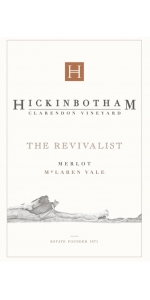
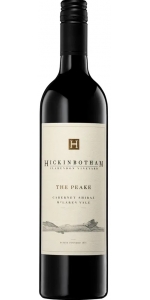
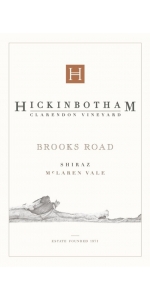
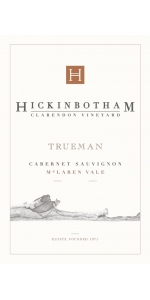
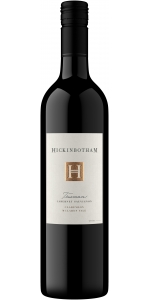
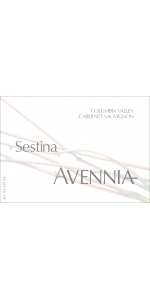
-150x300.jpg)



